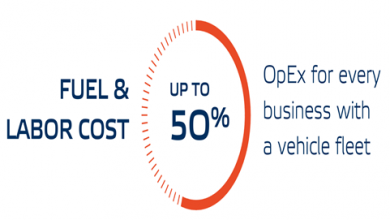India and the Asian market: opportunity for telematics
Pravar Gautam
Vice President-Asia & EMEA
Scope Technology (Asia) Pte Ltd

Markets overview
Telematics has been in the fast lane recently. With a number of industry verticals deploying telematics solutions and benefiting from them, there are clear indications that it is a technology whose time has come.
Telematics is changing the face of motor insurance just as rising car ownership is changing the mobility landscape for India’s rising middle class, expected to reach 200 million by 2020. The commercial potential of putting the two together is hard to miss. Until recently, Asia lagged behind European and American compatriots in the adoption of telematics for motor insurance, but this is now changing.
The telematics technology has re-defined existing business models in a saturated market place, as insurers continue to look at means through which they differentiate themselves and their product suite. Despite rising GDP of 6.7% expected in the Asia-Pacific region over 2015, insurers face diminishing returns as the market becomes more competitive. Under writing and administration systems are evolving and much of this change is driven by analytics and telematics, enabling insurers to reach a broader consumer profile e?ectively and profitably.
The increased demand across the fleet management sector, is also having a considerable impact on the market.
According to a recent report, “India Telematics Market (2013-2018)”, from 6Wresearch, the Indian telematics market is expected to reach $113.7 million by 2018, growing at a CAGR of 22.8% from 2013-2018. It is expected that as the awareness of telematics grows and infrastructure throughout the country strengthens, sales of telematics solutions will continue to increase.
Growth in the Indian telematics market
Based on the statistics and sales forecasts available, Indian telematics industry is heading towards a considerable peak. This trend is being driven by the continually changing macro and micro economic, political and business factors. The current climate has set the backdrop for the stark rise in technology, and in turn, the various firms looking to take advantage, and seize a share of this market.
This trend is further enhanced by the fact that India’s infrastructure investment plans of more than US$ 1 trillion in investment over the next several years according to industry analysts TRN Ltd, including planned construction of an additional 15,000 km of highway by 2017 will drive demand growth for tracking and fleet management throughout India. This new infrastructure will require 400,000 new buses by 2017, and similar growth is expected across vertical market segments including logistics, distribution, mining, construction, and employee transportation. These sectors are showing strong demand for tracking and fleet management, through the increasingly sophisticated use of vehicle and driver data by fleet operators.
Insurance Telematics in Asia
The real time monitoring, analysis and broadcasting of data through the telematics platform has the potential to fundamentally change and redefine the relationship between insurers and customers. As well as improving overall engagement levels with consumers, the technology allows insurers to cater for a pro-active asset protection model.
Through telematics, the ability to employ differential charging provides a more open and fair process, with not only the decision and the premium communicated to the policy holder but also the various factors that made up the premium calculation. That is quite a departure from the traditional insurance models that assess risk and determine premiums based on group behaviour and other proxy variables.
With more than 160 insurance telematics trials and launches currently under way in 34 countries, it is estimated that over nine million telematics-based insurance policies are in e?ect currently around the world. Asia, initially somewhat laggard, is catching up. In India specifically, the telematics market is projected to reach $301.23 million by 2021 (6Wresearch).
In May 2015, Bangkok Insurance (BKI) in Thailand became one of the early adopters, launching an insurance telematics program to manage risks from young drivers and commercial fleets. The BKI program is currently targeting around 10,000 customers in the first phase. In China, several Insurers have been preparing the market by providing telematics capabilities to their policy holders as part of their value-added programs Similarly, for most of Asia, the growth potential is obvious when you consider the uptick in car sales. McKinsey, estimates that new-car sales in China will overtake those of either Europe or North America by 2020.
Significantly, KPMG reports predict a healthy longer term “prognosis for the Indian automotive industry” but rapid growth isn’t the case for every nation in Asia. Information group Nielsen also says south-east Asian sales will drive much of the world’s demand for vehicles,in turn increasing the demand for telematics.
Traditional car-insurance policies will be harder to find as capital is attracted to the better return on investment o?ered by telematics-based insurers. The Connected Car Opportunity A recent report from Research and Markets concluded that the connected car market in India is expected to grow at a CAGR of 60.4%, which is a remarkable figure. Similarly, the Economic Times recently reported that internet-enabled cars now present a $30-billion market for a range of sectors in India and that, by 2020, the market is set to increase nearly six fold. Throughout India, the automotive industry is witnessing a new wave of technological revolution, which is boosting the idea of connected cars. The aftermarket services segment has accounted for the largest market share and is anticipated to lead in the forecast period. However, higher growth is exhibited in pre-embedded segment as automobile companies such as Honda India launch their ‘Connected Cars’ initiatives.
The provision of internet accessibility in cars en masse is inevitable, as consumers now expect such real- time services. This includes services from GPS and traffic navigation, to fuel analytics, weather forecasting and safety features. The connected car market in India represents a ground-breaking union of players from across a broad range of industries, including vehicle manufactures, telecommunications, tech providers and insurers. Looking ahead a little, more services are likely to be o?ered via telematics as cars get connected and become an integral part of the growing “internet of things” landscape. These ‘after market services’ can include proactive roadside assistance, vehicle health status, security and connected navigation.
These services are all considered added benefits for the consumer, increasing the OEM’s engagement with the driver and ultimately improving customer satisfaction rates.




